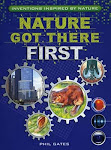Legend has it that the secret of 'forcing' rhubarb - keeping it in the dark to produce rapidly elongating succulent leaf stalks and to suppress green chlorophyll production - was discovered by accident at the Chelsea Physic Garden in 1815. That, combined with sugar becoming an increasingly affordable sweetener to counteract the tartness of the plant, contributed to the popularity of rhubarb and custard as a Victtorain pudding. Before that the plant had been grown as a medicinal plant on account of its somewhat devastating laxative properties, with documented use dating back to a Chinese herbal in 2700 BC. In was so effective as a laxative that in 1921 one doctor recommended it as a pugative that would even cure amoebic dysentry. Rhubarb leaves, with their high concentration of oxalic acid and other toxins, are poisonous and there have been a few documented cases of deaths after eating them, although you'd need to be rather unlucky and consume a large amount to succumb.
Today forced rhubarb is mainly grown commercially in darkened shed in the 'rhubarb triangle' around Wakefield in West Yorkshire, where it is harvested by candlelight. Plants need a winter chill to break the dormancy of the buds of the rhubarb crown. The exact parentage of domesticated rhubarb is uncertain and it's known to be a hybrid of more than one species. All told, around 50 species of Rheum are known and at least one of the parents of the domesticated crop came from south-eastern Russia, where it grows on the banks of the River Volga.















